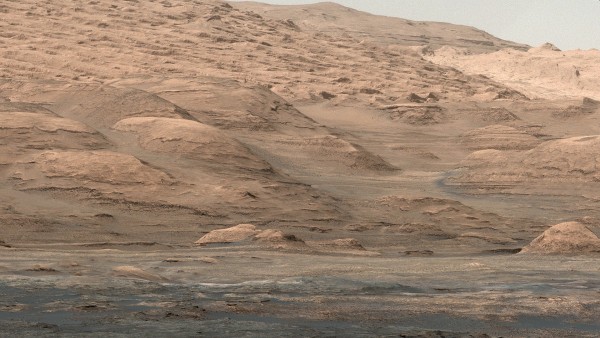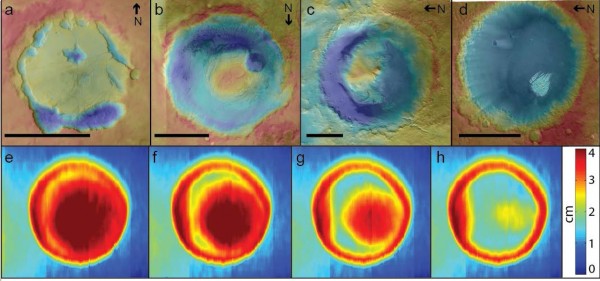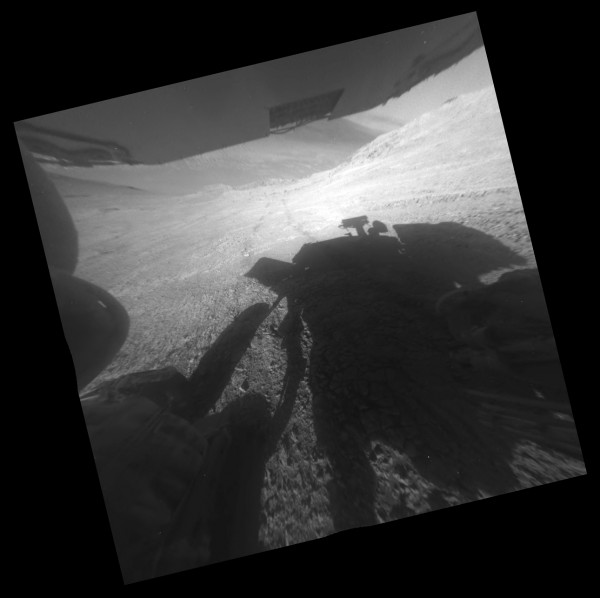
On Earth, mountains often form as Earth’s great land plates – called its tectonic plates – smash together. Geologic activity below our world’s surface drives a continual, slow-motion shifting of Earth’s surface. Meanwhile, the planet next door, Mars, has mountains, too, some a mile high or higher. But Mars doesn’t have tectonic activity so it’s been an open question as to how these mountains – or “mounds” as scientists call them – are formed. New research published March 31, 2016, in Geophysical Research Letters shows how, over billions of years, the winds of Mars carved its massive mounds.
Mackenzie Day, a graduate student at the University of Texas at Austin Jackson School of Geosciences and lead author of the new study, said in a statement:
Wind could never do this on Earth because water acts so much faster, and tectonics act so much faster.
In other words, on Earth, the movement of plate tectonics overrides mountain-building by wind. But not so on Mars.

Prior to this study, because scientists knew Mars did not have plate tectonics, how the mountains, or mounds, on Mars formed was unknown. These mounds are found at the bottoms of large and ancient craters, such as the Gale Crater, landing site of the Mars Curiosity rover in 2012. Curiosity has been exploring the flanks of the Gale Crater’s central mound, called Mount Sharp.
Curiosity found that Mount Sharp, which is 3 miles (5 km) high – and other Martian mounds like it – are made of sedimentary rock. The bottoms of these mounds are made of sediments carried by water that used to flow into the crater. The tops are made of sediments deposited by wind.
Day commented:
There’s been a theory out there that these mounds formed from billions of years of wind erosion, but no one had ever tested that before.
So the cool thing about our paper is we figured out the dynamics of how wind could actually do that.
The test took the form of a miniature crater built by the researchers – 11 inches (30 cm) wide and 1.5 inches (4 cm) deep. The researchers filled this tiny test crater with damp sand, placed it in a wind tunnel and tracked the elevation and distribution of sand in the crater until all of it had blown away.
The model’s sediment was eroded into forms similar to those observed in Martian craters, forming a crescent-shaped moat that deepened and widened around the edges of the crater.
Eventually all that was left of the sediment was a mound, which, in time, also eroded away. Day said:
We went from a filled crater layer cake to this mounded shape that we see today.
Read more about Day’s study via the American Geophysical Union

By the way, I couldn’t resist showing you the image below of the first mountain climbers on Mars, our own traveling robot. On March 10, 2016, the Opportunity rover climbed the steepest slope ever tackled by any rover on Mars, while attempting to reach the crest of Knudsen Ridge.
The image above portrays the view from Opportunity, as it climbed at a 32-degree angle on March 10.
Afterwards, in eight drives between the steepest-ever drive and March 31, Opportunity first backed downhill, northward, for about 27 feet (8.2 meters), then drove about 200 feet (about 60 meters) generally southwestward and uphill, toward the next target area.
Read more about Opportunity’s steepest-ever climb on Mars

Bottom line: Mars doesn’t have mountains in the earthly sense, because it doesn’t have plate tectonics. The “mounds” of Mars can be miles, though, and earthly mountain-climbers may someday scale them. A new study says the Mars mounds were carved over billions of years by wind and climate change.











